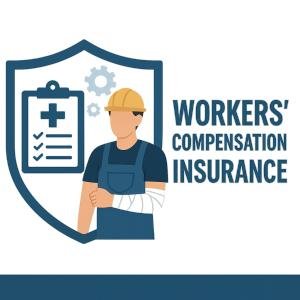
Return-to-Duty Fitness Tests: Reducing Security Guard Workers’ Comp Severity
August 4, 2025
Senior Living Facility Workers’ Comp Loss Runs: Clean Them Up for Better Rates
August 4, 2025In the competitive and rapidly evolving home health industry, maintaining healthy workers’ compensation margins is critical to an organization’s financial stability and long-term success. One of the most effective strategies for safeguarding these margins lies in cultivating a robust safety culture that proactively minimizes workplace injuries and associated costs. this article explores the essential components of creating and sustaining a safety culture tailored to the unique challenges of home health care, highlighting actionable practices that empower organizations to protect their workforce while optimizing workers’ comp outcomes.
Table of Contents
- Building Leadership Commitment to Safety excellence
- Implementing Comprehensive training Programs for Risk Reduction
- Leveraging Technology to Enhance Incident Reporting and Response
- Promoting Employee Engagement Through Continuous safety communication
- Q&A
- Insights and Conclusions
Building Leadership Commitment to safety Excellence
Leadership commitment serves as the cornerstone for embedding safety into every layer of home health operations. When executives and managers visibly prioritize safety, it fosters a culture where every employee understands their vital role in risk management. This commitment needs to be more than words-leaders must allocate resources, support ongoing training, and set measurable safety objectives that align wiht business goals. A unified leadership front not only mitigates liability but also directly preserves workers’ compensation margins by reducing injury-related costs.
Key actions to demonstrate true leadership involvement include:
- Regularly reviewing safety performance metrics and sharing results openly.
- Engaging frontline staff in safety discussions and decision-making processes.
- Investing in technology and tools that proactively identify hazards.
- Recognizing and rewarding safe behaviors to reinforce positive practices.
| Leadership Action | Impact on safety | Effect on Workers’ Comp |
|---|---|---|
| Monthly Safety Audits | Identifies risks before incidents occur | Reduces claim frequency |
| Safety Training Investment | Enhances staff competency | Limits severity of injuries |
| Open Communication Channels | Encourages reporting of hazards | Improves early intervention |
Implementing Comprehensive training Programs for Risk Reduction
Developing robust training programs tailored specifically to home health care environments is critical for minimizing risks and securing workers’ compensation margins. These programs should focus on key areas such as hazard identification, proper use of personal protective equipment (PPE), and safe patient handling techniques. Equipping employees with practical knowledge and actionable skills not only reduces the frequency and severity of workplace injuries but also instills a proactive mindset towards safety. Leveraging interactive training tools, including hands-on simulations, video demonstrations, and real-world scenario drills, can considerably enhance engagement and retention, driving a measurable impact on overall risk reduction.
To ensure effectiveness, training programs must be continuously updated and reinforced with clear communication and leadership support. Incorporate ongoing assessment measures such as quizzes, feedback surveys, and competency evaluations to identify knowledge gaps and tailor follow-up sessions accordingly. Consider the following core components for a triumphant training framework:
- Regular refresher courses to maintain up-to-date compliance
- Customized modules that reflect the unique challenges of home care settings
- Incident reporting protocols to encourage transparency and rapid response
- Leadership involvement to promote accountability and a culture of safety
Leveraging Technology to Enhance Incident Reporting and Response
Embracing advanced digital tools empowers home health agencies to streamline their incident reporting processes, ensuring timely and accurate documentation. Mobile applications equipped with easy-to-use interfaces enable caregivers to report incidents instantly from the field, reducing delays and minimizing errors. Automated alerts and incident tracking dashboards not only facilitate rapid response but also promote transparency and accountability across the care team. Such technologies foster a proactive safety environment by quickly identifying risk patterns and triggering preventive measures before issues escalate.
Key advantages of integrating technology into incident management include:
- Real-time data collection and centralized reporting for faster decision-making
- Enhanced communication channels between frontline workers and safety managers
- Data-driven insights supporting continuous improvement in protocols
- Reduction in administrative burdens, allowing focus on patient care quality
| Technology Feature | Benefit | impact on Workers’ Comp |
|---|---|---|
| Mobile Reporting Apps | Instant incident submission | faster claims processing |
| Automated Alerts | Immediate notifications | Early intervention reduces severity |
| Data Analytics | Risk trend identification | Proactive prevention lowers claims |
Promoting Employee Engagement Through Continuous Safety Communication
- Utilize mobile platforms to deliver safety updates and allow instant reporting of near-misses.
- Create visually engaging materials that reinforce key safety messages and protocols.
- Encourage peer-to-peer recognition programs that reward safe behaviors.
- Schedule routine risk assessments with frontline employees to identify emerging hazards.
these approaches not only reinforce a culture of safety but also contribute to sustaining manageable workers’ compensation margins by reducing incidents and promoting early intervention.
Q&A
Q&A: Creating a Safety Culture That Protects Workers’ Comp Margins in Home Health
Q1: Why is cultivating a safety culture critical in the home health industry?
A1: The home health sector presents unique challenges, including varied client environments, unpredictable hazards, and workforce dispersion. Establishing a robust safety culture helps minimize workplace injuries, reduces workers’ compensation claims, and ultimately protects operational margins by controlling costs associated with employee absence and claims management.
Q2: How does a strong safety culture impact workers’ compensation costs?
A2: A proactive safety culture emphasizes prevention over reaction. By training staff on best practices, encouraging hazard reporting, and implementing safety protocols, organizations can reduce incident frequency and severity. Fewer injuries mean reduced claims, lower insurance premiums, and less disruption to service delivery, thereby preserving workers’ comp margins.
Q3: What are some key components of a safety culture tailored to home health providers?
A3: Key components include consistent training on safe patient handling and infection control, promoting open communication about risks, leveraging technology for real-time hazard detection, and leadership commitment to safety policies. Additionally, empowering employees to participate in safety initiatives fosters ownership and continuous improvement.
Q4: How can leadership influence the development of a safety culture?
A4: Leadership sets the tone by prioritizing safety as a core organizational value. Leaders must allocate resources for safety programs, model compliance with protocols, recognize safe behaviors, and respond promptly to reported risks. Their visible commitment motivates staff to embrace safety as an integral part of their work.Q5: What role does employee engagement play in maintaining safety standards?
A5: Engaged employees are more likely to adhere to safety procedures and report potential hazards. Encouraging feedback,involving staff in policy development,and providing regular safety education helps maintain vigilance. Engagement drives accountability, making employees active partners in risk reduction efforts.
Q6: How can technology support a safety culture in home health?
A6: Technology such as mobile apps for incident reporting, telehealth monitoring, and ergonomic assessment tools can enhance safety. These innovations allow for timely communication, documentation, and data analysis, enabling organizations to identify trends, address risks promptly, and refine safety strategies efficiently.
Q7: What metrics should organizations track to assess the effectiveness of their safety culture?
A7: Key performance indicators include the frequency and severity of workplace injuries, workers’ compensation claim rates and costs, employee safety training completion rates, near-miss reporting, and safety audit results. Regularly monitoring these metrics helps organizations measure progress and guide improvements.
Q8: In what ways does reducing workers’ compensation claims benefit home health agencies beyond cost savings?
A8: Lower claims improve staff morale by fostering a safer workplace,reduce operational disruptions caused by employee absence,enhance reputation with clients and payers,and contribute to regulatory compliance. Collectively, these benefits support sustainable service delivery and organizational growth.
Q9: What challenges might home health agencies face when implementing a safety culture, and how can they be overcome?
A9: Challenges include workforce turnover, varied client environments, and resource limitations. Overcoming these requires tailored safety training, flexible policies adaptable to different settings, leveraging partnerships for resources, and continuous leadership support to maintain momentum.
Q10: What is the first step for a home health agency looking to strengthen its safety culture?
A10: The first step is conducting a comprehensive safety assessment to identify current gaps, risks, and employee perceptions.This baseline informs targeted interventions, resource allocation, and establishes a foundation for ongoing safety culture development aligned with organizational goals.
insights and Conclusions
fostering a robust safety culture within home health organizations is not just a regulatory or ethical imperative-it is a strategic business priority. By proactively addressing workplace hazards, investing in comprehensive training, and encouraging open communication, companies can significantly reduce workers’ compensation claims and safeguard their profit margins.Ultimately, a commitment to safety enhances employee well-being, operational efficiency, and financial resilience, positioning home health providers for sustainable success in a competitive industry.
“This content was generated with the assistance of artificial intelligence. While we strive for accuracy, AI-generated content may not always reflect the most current information or professional advice. Users are encouraged to independently verify critical information and, where appropriate, consult with qualified professionals, lawyers, state statutes and regulations & NCCI rules & manuals before making decisions based on this content.







